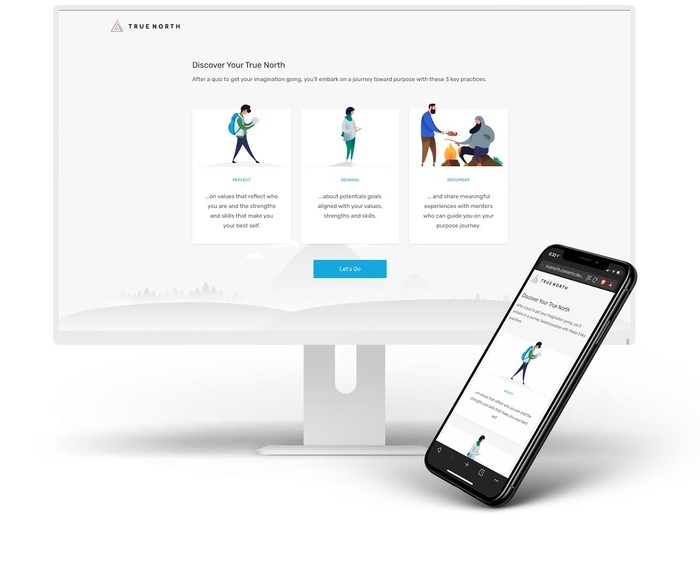The second major component is the experience module. Once students have finished building the initial persona module, they can invite guides such as academic advisers, faculty mentors and even wise peers to view their profiles and join them on their purpose journeys.
The experience module then becomes the main interface for collaboration. Students can create shared experiences with their guides and plot potential paths for academic careers. This aspect of the app encourages users to find and reflect on meaningful, purpose-defining events. More experienced guides can help curate and orchestrate those events. Students can use True North to build an extensive portfolio, filled with contemporaneous notes that they can share with guides throughout their college and career journeys.
LEARN MORE: See how technology incubators are fueling startup success on university campuses.
How Boston College Uses Tech to Strengthen Its Value
Together, Liang’s research team, Klein, Convertiv web developers, and the university’s CDIL and ITS collaborated closely to create the technology infrastructure that keeps the app running smoothly and securely behind the scenes.
The application is built with cutting-edge technology as a progressive web application rather than a traditional web application or native mobile app in order to balance performance and rapid iteration. As a PWA, the app can be distributed widely across numerous platforms — such as browsers, tablets and mobile devices. It can be rapidly iterated throughout its development.
The primary interface was built by using a JavaScript library called React. Using the power of modern browsers and leveraging build time and server-side rendering, the development team distributed True North as a tiny, lightning-fast browser app, while creating a near-native look and feel. This lets BC create the kind of user experience it needs while maximizing distribution across platforms.
Finally, True North runs as a container application. It uses Docker to drive the main stack. By using Docker, stakeholders can create and manage their own installations of the application, either on-premises or on one of the container cloud providers. This lets stakeholders deploy what they need by scaling adequate capacity and managing privacy.
READ MORE: Learn how to create better student support structures for remote learning.
The Key to the Future of Higher Education
True North is a powerful example of how higher education can powerfully leverage technology to engage students with supportive networks that help them pursue purposeful directions — even during a pandemic.
Colleges and universities will get past COVID-19, but remote learning is here to stay. The universities that get remote learning right will survive and thrive. But the universities that double down on cultivating rich, formative relationships and experiences will retain the true value of higher education. As educators, our goal is to create this new reality — both inside and outside of the classroom.













